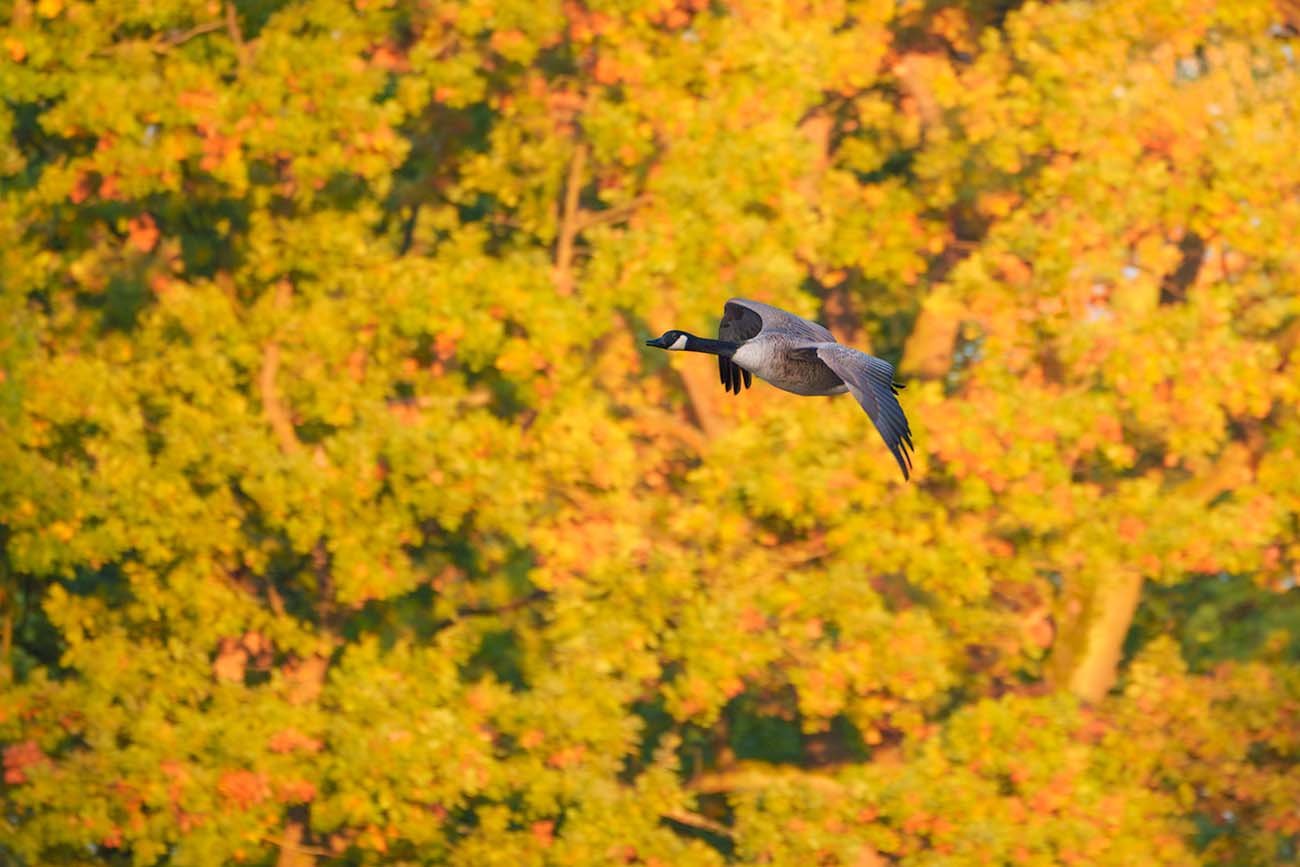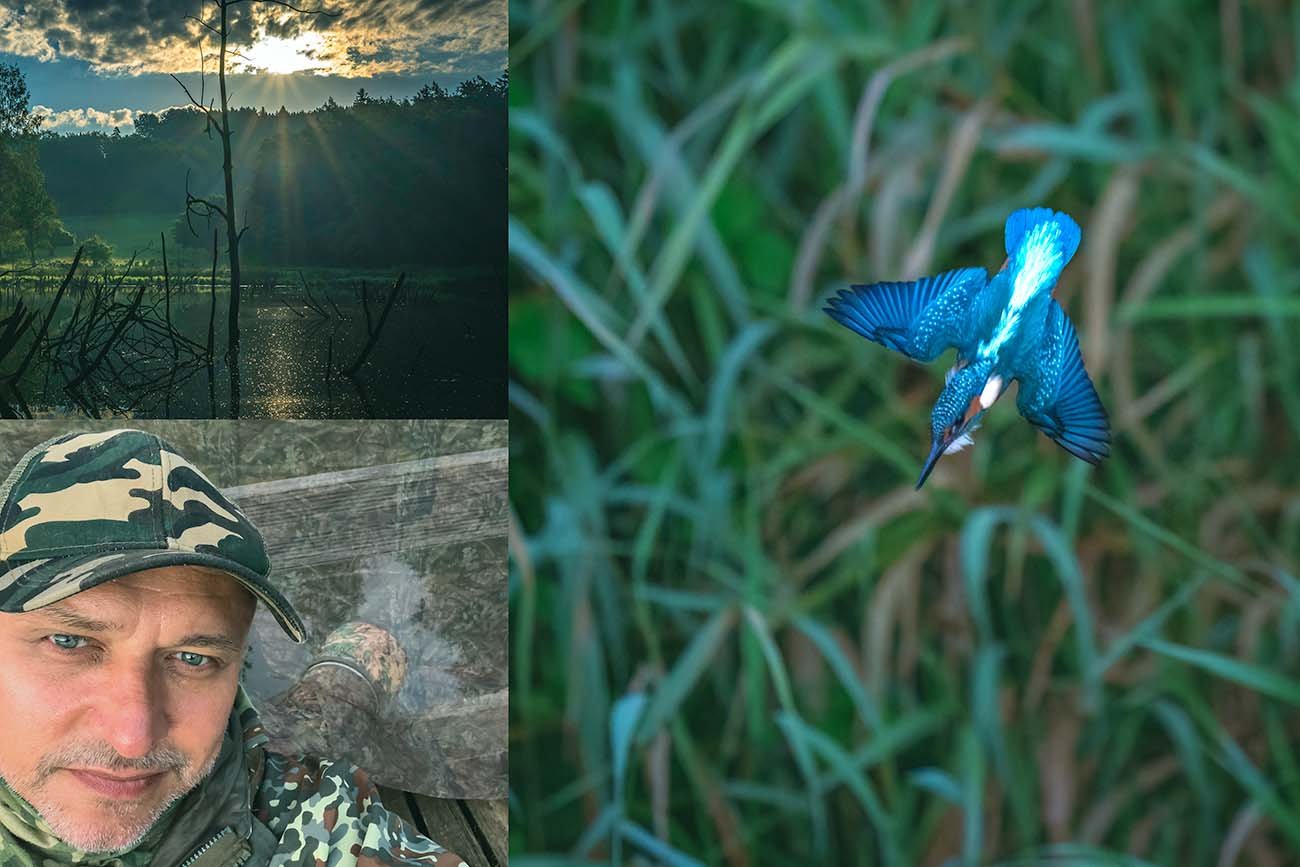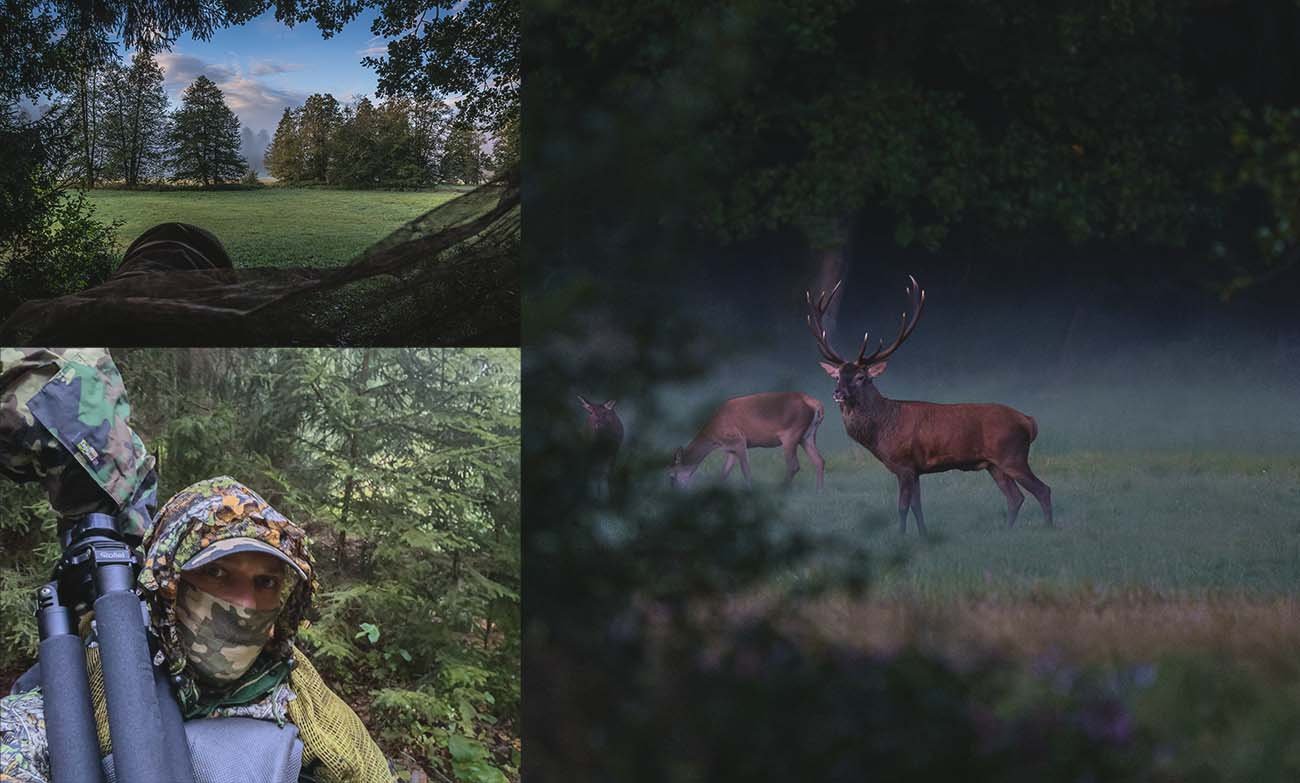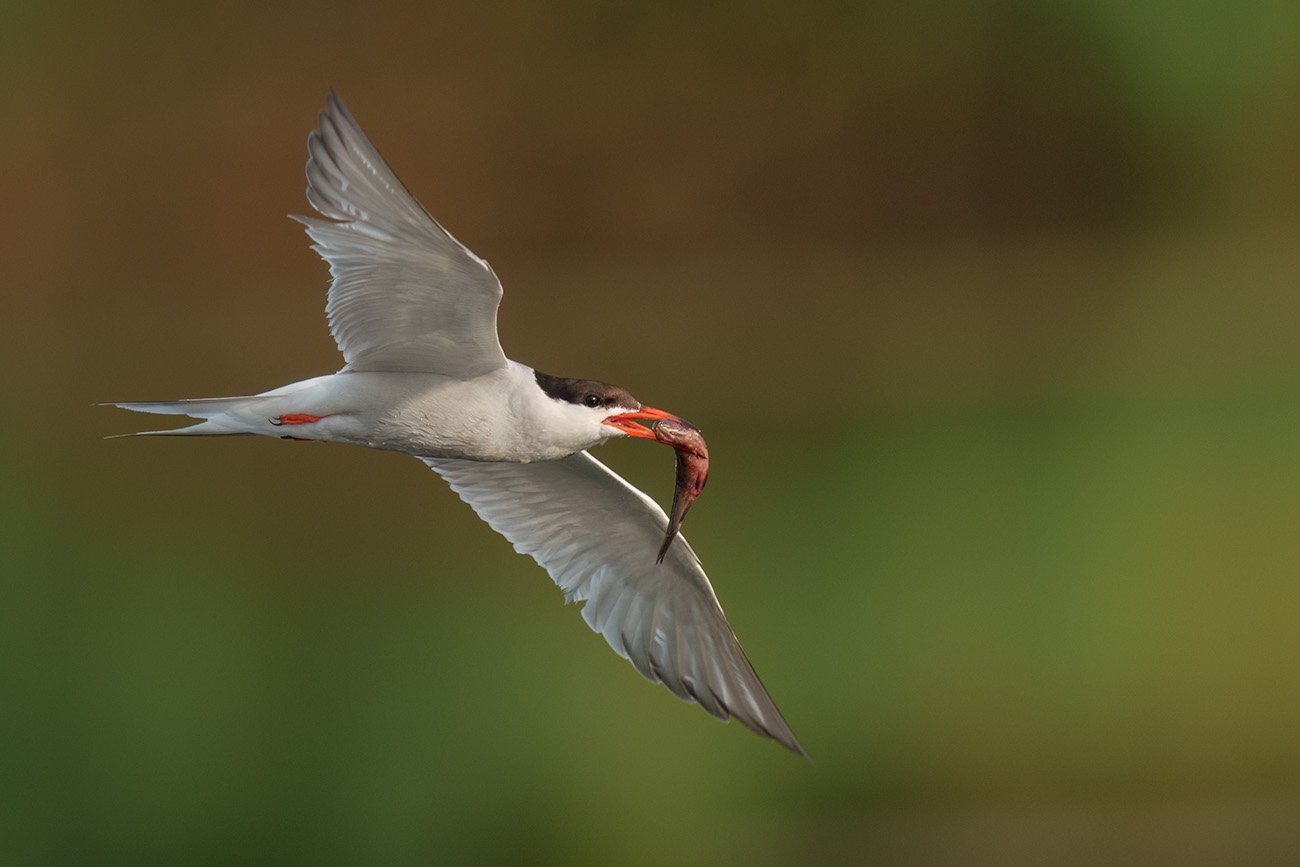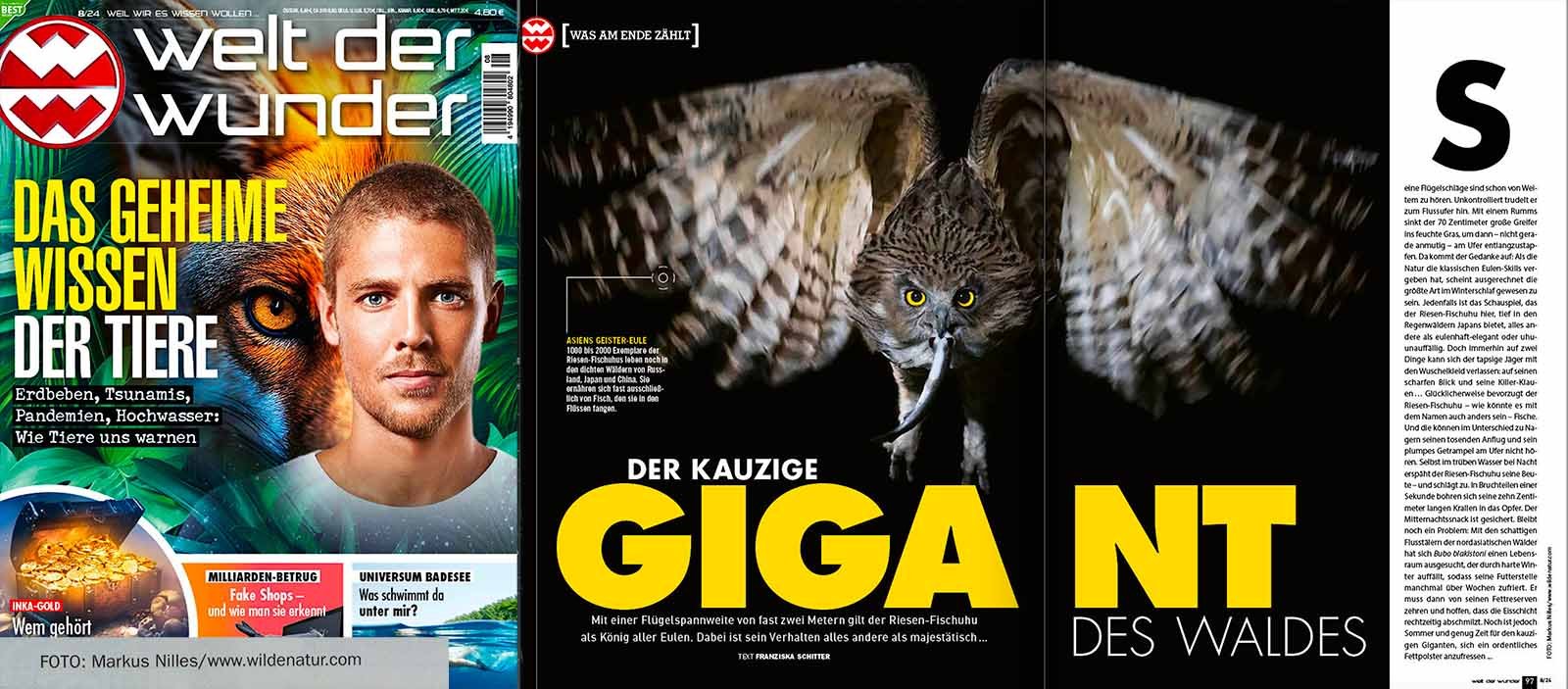Strawberry Moon – Photo Idea Spontaneously Botched
Strawberry Moon - Sony A1 + 400 mm f2.8 GM + 2x TC
Straight into Adventure: No Plan, No Practice—Chasing the Strawberry Moon
June 11, 2025, 9:29 p.m.
I’m standing on a small hill—about 326 meters high—surrounded by fields. This is the highest point in the area, roughly a thirty-minute drive from the nearest city. That’s all the planning behind my photo project.
I barely know this region; in the past few years, I’ve only walked here three times. I do remember one winter scouting trip when I spotted goldfinches feeding in an unharvested sunflower field. Still, this was the only place I thought of: less light pollution than near the city, with a clear view to the horizon capped by a line of trees.
No test shots. No backup plan. Just a spontaneous idea, only a few hours old: digitally capture the Strawberry Moon as it rises on the horizon.
Rare to See—So What Is the Strawberry Moon?
The Strawberry Moon is the last full moon of spring. It hangs low in the sky and only looks this large and red every 18.6 years. Native Americans named it for the wild strawberries that ripen around this time. In Europe, it’s also called the Rose Moon, the Honey Moon, or the Hay Moon.
Tonight, the weather is perfect for a clear view.
Long Lenses, Big Challenge: My Gear Setup for the Red Moon
Next to me stands my wife, excited for the event. In front of me are two tripods: one with an 800 mm lens, the other with 600 mm. A third camera with a 28–75 mm f/2.8 wide-angle lens stays in my backpack.
I almost switched to 600 mm—800 mm can exaggerate heat shimmer (Heat haze) in warm air—but I stick with 800 mm at the last second. With the Moon rising so low, it travels through the warmest air layers, making sharp shots even harder.
On my Sony A1, I use a 400 mm f/2.8 plus a 2× teleconverter (giving 800 mm). On the Sony a6700, I mount the 200–600 mm lens; its APS-C crop factor (1.5×) gives me up to 900 mm. This second camera will record a timelapse of the Moon’s ascent.
Last-Minute Chaos: Moving Positions and Technical Glitches
Strawberry Moon high overhead, with fewer warm air layers. Sony a6700 + Sony 200–600 mm G
I open PhotoPills to find the exact moonrise location. But today, the app’s GPS is failing—likely poor cell service. Each calibration spits out wildly different coordinates. After multiple attempts, I decide to shoot the timelapse a bit wide to ensure I don’t miss the Moon.
This is already our third—and probably final—location. Nothing blocks the horizon here. At our previous spot, conditions were better, but the whirring blades of a wind turbine above us ruined the calm and feel not comfortable for us. So we chose this quiet farm track entrance “in the middle of nowhere,” with only fields and a distant tree line. Perfect—isn't it?
Out of nowhere, one car after another speeds by on the nearby main road. I have no idea why—it was quiet just moments ago, and now, right before everything is about to begin, traffic is rolling through this no-man’s-land. “This spot is terrible,” I say to my wife. She replies, “Then let’s move again!” The headlights from the cars almost coming straight at us would ruin my timelapse, because the road runs almost parallel to the camera facing east. Yet I hesitate: take everything down, pack it up, drive back to the wind turbine, set it all up again—and this just 15 minutes before the show? It feels like failure is certain. Then I think, “Fuck it”—I take the cameras off their tripods, toss them loosely into my backpack, stow the tripods in the car trunk, and we drive back to the wind turbine site.
Too Late, Too Fast, Too Warm: Hectic Moments at Moonrise
As soon as we arrive, I jump out of the car, grab the first tripod from the trunk—and see the red Moon already peeking above the treetops on the horizon. Classic—not ready when the action happens! I realize immediately: time is short, because everything happens so fast now. Before I even finish that thought, a large, glowing slice of the red Moon is already visible. So I mount the A1 with the 800 mm lens on the first tripod, set up the second with the a6700—prioritizing the timelapse. By the time everything is in place, half of the bright red lunar disc is above the tree line. I manually focus on the enormous Strawberry Moon and start the timelapse. Then I switch back to the 800 mm for still photos: snap the shots quickly, I think—manual focus, fire away. But the images remain soft; the heat haze at this low rise angle combined with 800 mm focal length works against me. About fifteen minutes later, after the peak of the Strawberry Moon spectacle has passed, here’s what we have:
- A timelapse that only starts halfway through
- A photo where only a few treetops graze the bottom of the Moon
- A short video clip of the rising Moon against clear sky
- A single still of the Moon once it’s higher Disappointingly, none of it matches what I had hoped for.
No Magic—Yet No Perfect Shot
What kind of shots did I imagine? A photo of the large, reddish Moon rising, with half of it hidden by the treeline—so the silhouette of the trees cuts across one hemisphere—and a timelapse that captures the entire moonrise cycle. Technically, that wouldn’t have been rocket science! I’m not completely satisfied. I hate photo situations where everything suddenly has to happen in a mad dash just because you lacked preparation. I don’t mean having to rely on your skills on the fly, but rather failing to get the shots you want of such a “static” subject because unfamiliarity with the area put you on the back foot. Still: Even evenings like this bring valuable experience. And the feeling of being out under a clear sky remains. My takeaway from the night: In the frenzy, prioritize—photo or timelapse. I could have gotten the photo I wanted. But by then, it was already too late for the timelapse I dreamed of. With these thoughts, my wife and I drive home. I’ll look at the photos tomorrow. For now, it’s straight to bed.






